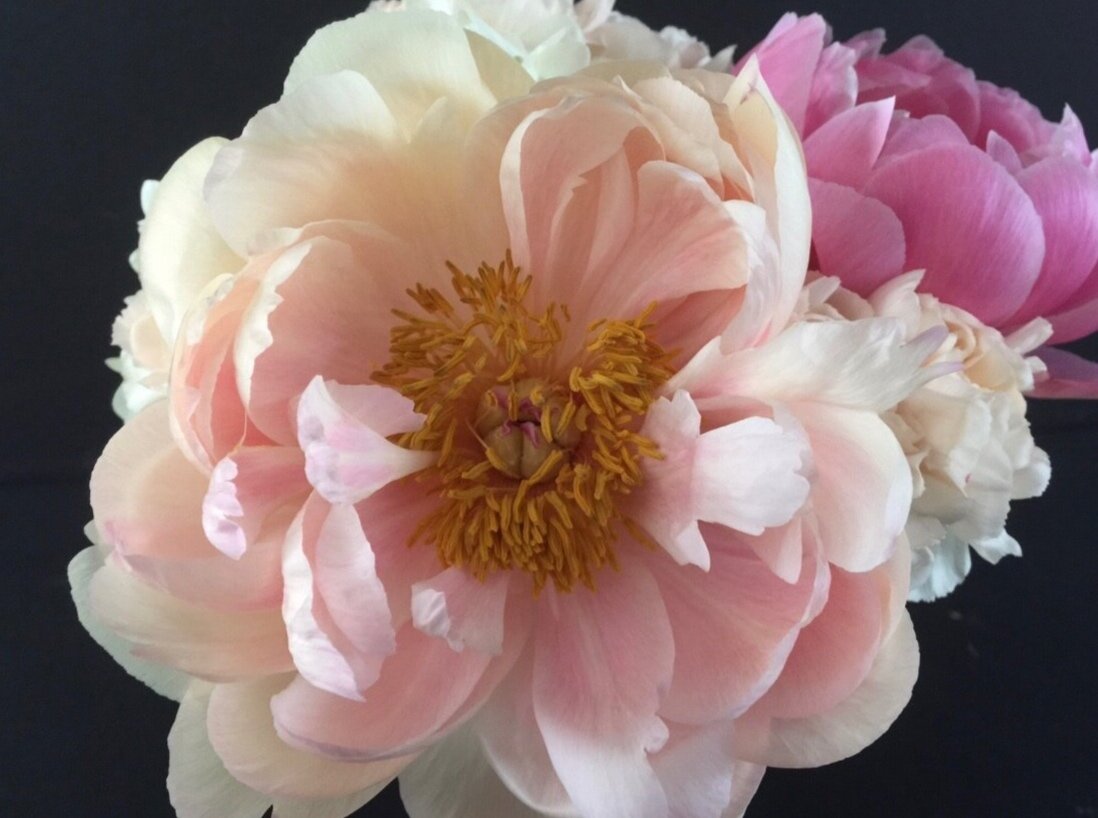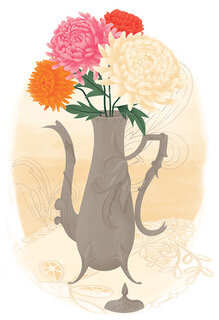Written for The Flower Podcast by Odessa Begay
Growing weary of awkward zoom calls and endless e-mails? Why not give the language of flowers a try! From the youthful innocence of lilacs to the boastfulness of hydrangeas, people have been using flowers to communicate meaning and send messages for millennia.
The Language of Flowers (also known as floriography) had its most recent heyday in Victorian England. But as our stuffy and solitary social distancing begins to overlap with the freshness and beauty of spring, what could be nicer than skipping the Skype call and sending your next message with a coded bouquet?
Below are a few brief examples of ways you can use the language of flowers to share positivity and optimism to get you started. To learn more about the meaning, literature and lore of flowers, check out my new book, The Language of Flowers: A Fully Illustrated Compendium of Meaning, Literature, and Lore for the Modern Romantic. For retailers click here.
Chrysanthemum: Cheerfulness under adversity
Chrysanthemum: Cheerfulness under adversity
Amid the cold dreary landscape of winter, there’s one late blooming flower that can still make a happy appearance (depending on your zone). With its fluffy pom-pom blooms and array of colors, Victorians viewed the chrysanthemum as having an “enviable disposition” for its ability to give so much cheerfulness even under winter weather conditions.
Lily of the valley: Return of happiness
As winter receded, an early blooming lily of the valley was a sign that spring had arrived. Gone was the bleakness of winter. Seeing the lily of the valley meant that months of warmth and sunshine were on the horizon.
Pansy: You occupy my thoughts
Frequently used in recipes for spells and love potions, the pansy has had associations with amorous thoughts since the middle ages. But it's not just its uses that tie it to the world of thoughts. Some also felt the flower resembled a bowed head looking down in deep contemplation. Later, the Victorians extensively hybridized the flower to make it look more and more like a face. It's no surprise then that they interpreted the gesture of giving an upright pansy as “think of me.”
With gorgeous full-color illustrations, ornate decorative elements, lettering in metallic ink, and engaging text, The Language of Flowers: A Fully Illustrated Compendium of Meaning, Literature, and Lore for the Modern Romantic is a treasure for flower lovers. A sumptuous, contemporary anthology of 50 of the world's most storied and popular flowers, each of its entries offers insight to the meaning associated with the flower, and is a fascinating mix of foklore, classic mythology, literature, botanical information and popular culture.
Thank you Odessa Begay for giving us a glimpse into The Language of Flowers. May we never cease to appreciate the beauty and traditions of these lovelies that echo throughout history. Flowers will always hold a special place in our hearts. Our hope is to continue to share this passion and love of flowers with our community. Flowers are so much more than a simple plant and an adornment to an occasion. Flowers represent life, love, beauty, and perseverance. Let flowers continue to speak!





